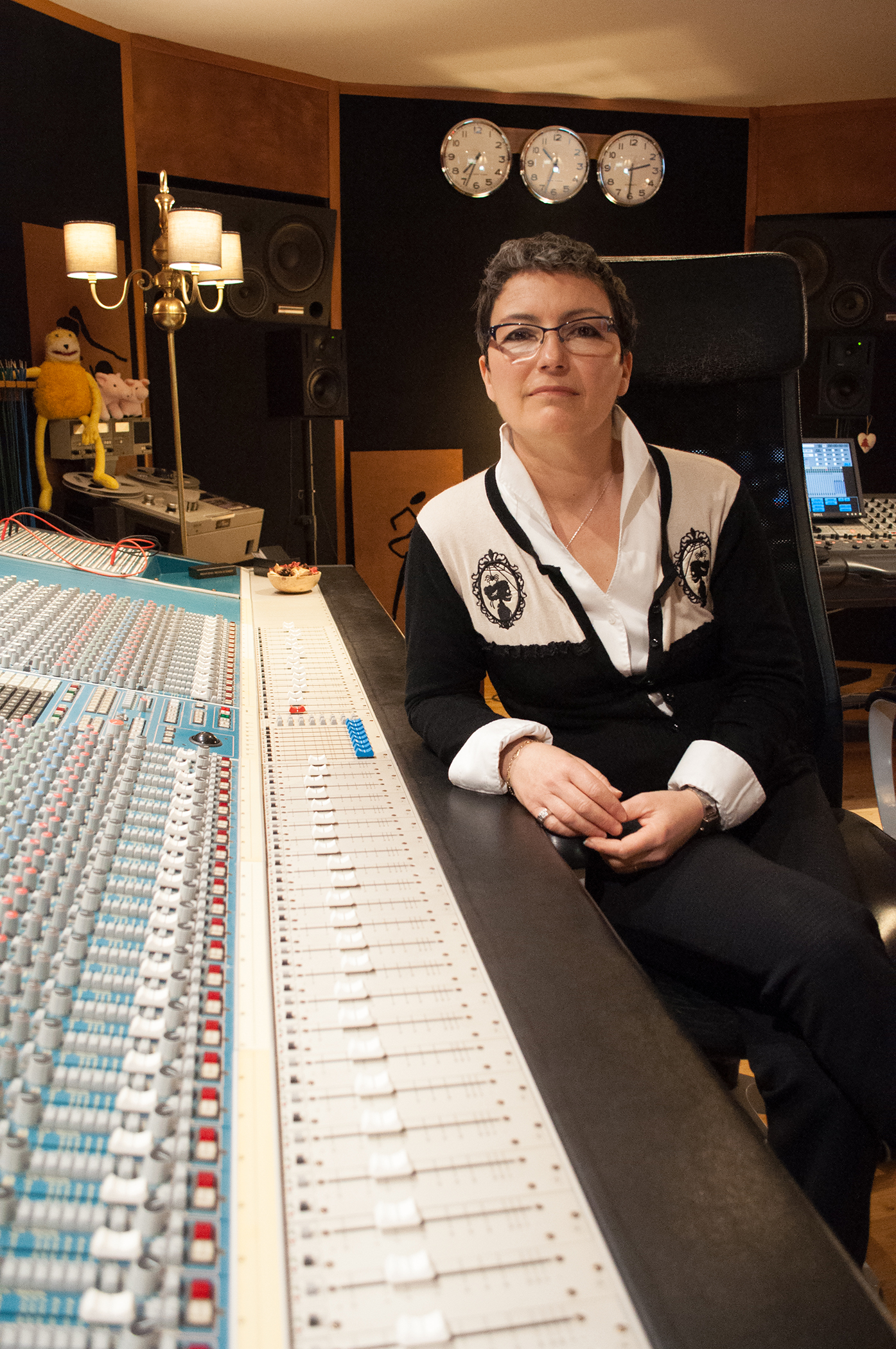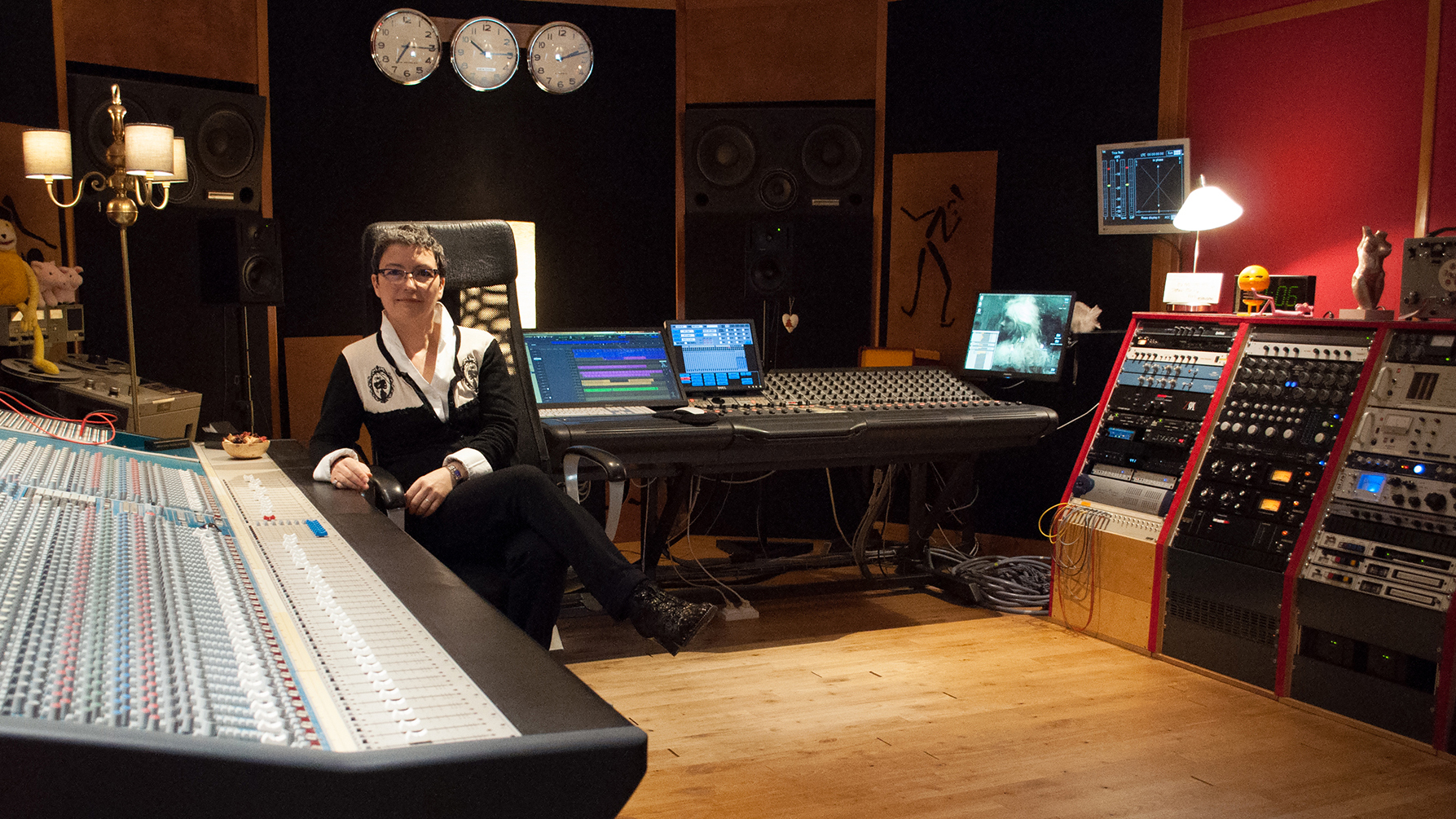Veronica Ferraro is a France-based mixing engineer who is known for her work worldwide. She earned a Grammy nomination for DJ David Guetta's hit single “When Love Takes Over” that featured vocals by Destiny’s Child's Kelly Rowland. She has had many chart-topping singles and several gold and platinum records throughout her career.
NUGEN Audio sat down with the master mixer to find out more.
NUGEN Audio: How did you get your start in this industry?
Veronica Ferraro: For as long as I can remember, I’ve always been in the studio, because my parents were musicians, and my uncle was a sound engineer. I wanted to be a musician, but my parents pushed me in another direction, because they knew it was hard to make money in that industry. Instead, I focused on music production and every other possible angle of music. I wanted to know everything there was to know about why and how music was made. After graduation, I worked at my uncle’s music studio as an engineer.

I spent some time in New York in the 1990s but moved back to France when I took on my first big mixing project, an album by famous French artist Christophe. I loved that album and it encouraged me to focus only on mixing moving forward.
In 2009, I met Fred Riesterer, who produced the hit song “When Love Takes Over” from David Guetta and Kelly Rowland. He asked me to mix the song for him, and that became a very big step in my career. The song was nominated for a 2009 Grammy Award for Best Dance Recording. That was incredible for me as an engineer, especially as a woman and French mixer. Being there at the Grammys was just fantastic, and it changed my life.
Soon after, I met Andre Recke of EMI Germany who introduced me to Billy Mann and Liz Baylog of Manncom, they became my managers for 11 years. As a European heavily focused on electro dance music, mostly pop and dance, it was very interesting to be able to bring that skill to the U.S., where the style was growing.
[Music Festivals Are Back. Are You Prepared to Deal with the New Normal?]
NA: What was it like starting out as a woman in the industry?
VF: At that time, it was not common to find a female engineer. Most of my co-workers were shocked by the fact that I was a woman―women were usually behind a reception desk, and not working as an audio engineer, especially in France. Any negative reaction just gave me the strength to push myself to be better, because you must do that if you want to get through it.
It's been hard through the years because many record companies were skeptical about whether they can trust a woman in this role. The only female engineer I knew of when I started out was Susan Rogers. She inspired me, and I thought, 'if she can do that, I can too.'
It’s different now that we’re living in another century. After working 34 years in studios, being a woman now feels like an advantage. For starters, I’ve earned respect because I’ve been mixing for a long time and I had some success and number one songs and albums, and that makes a big difference. Also, I think a lot of artists are now curious and excited to have a woman behind the desk, mixing. But ultimately, it doesn’t matter if I’m a man or woman. I’m sitting at my desk, using my fingers, ears and taste to mix. It’s the same for everyone.
NA: What are you doing now?
VF: Today, I work with Liz Baylog, the owner of Bread City, my current management agency, and our team is all women. I am also the CEO of French Audio Village recording studio. I mix about 100 songs a year, for maybe 10 or 12 years now. My goal today with the mixes is to dive into the projects. I want to feel what they feel and enhance it, because, with music, it’s all about the emotion. I want every song to come across like a cinema experience and have the listener dive into it at the first bar until the end, so they are immersed in the story. With people using headphones so much now, it has become especially important to engage listeners completely into the music. The mix reveals a lot of things. Plus, I really love that I can add much of myself into it and make it personal.
I’ve been working with Solomun, a Bosnian-German electro DJ/producer, whose last album “Nobody Is Not Loved” was released last year. I’ve also been mixing for a Swedish singer by the name of Little Jinder. I’ve mixed a couple of albums with her, and she’s doing some exciting music that I really love. There are a lot of other worldwide artists I continue to work with, including Girlwoman, P!nk, Greyson Chance, Kelly Rowland, Marteria, Seeed, Paty Cantú, GLADES, Natalie Imbruglia, Emily Saliers, S.B.E., and Dola, among others.
[SCN Top 50 Systems Integrators 2021]
NA: What are some challenges of mixing?
VF: The challenge nowadays is that most musicians don’t go into studios to record; they are doing it themselves. So, when it comes to the real mixing side, you have a lot more to do on a technical level. And there’s the artistic aspect as well. It’s a two-sided issue, because everyone wants the best song of the year―and the recordings they provide aren’t always the greatest. That’s the truly difficult part that I face now, it was a little bit different before, when artists recorded in a studio with professional producers.
NA: How does NUGEN Audio help you solve those problems?
VF: I use NUGEN’s complete Producer bundle, which includes ISL2, SEQ-ST, Stereoizer, Stereoplacer, Monofilter, MasterCheck, and Visualizer. SEQ-ST is one of my main EQs because it is so versatile. I love the ability to play with the depth and sharpness. Most EQing is based on cleaning parts of the spectrum and enhancing others, the depth allows me to go further very quickly and intuitively.
I also use ISL, which is a great plug-in to use with separate instruments. It gets rid of bad clicking and noisy attacks and lowers the digital level. This is one of my favorite plug-ins, it’s easy to use and very efficient. It’s magical on almost every instrument, and I can push the acoustic level without overpowering the digital level.
I’ve also been spending more time with NUGEN’s Stereoizer, and there’s so many things I can do with that plug-in. It is unbelievably efficient on the stereo perception. I usually like to start with a preset, and Stereoizer gives me a point to start from where I can then usually just tweak a little bit from there. Stereoizer provides a lot of space and width, and it’s quite incredible. It’s really useful, especially because you can choose exactly which frequencies you want to adjust in the stereo file, rather than tweaking the entire spectrum.
[AV/IT company roadmaps for 2022]
NA: Can you illustrate this with specific examples of how NUGEN Audio helped you achieve your goals?
VF: Recently, I was mixing a piano track that was clipping and that distortion became printed in the sound. This is usually really hard to deal with as you can’t re-design the sound by itself. NUGEN ISL2 allows me to address this problem without changing the sound too much. It’s a great limiter, and one of my favorite plug-ins in the bundle.
I’ve also used Stereoplacer, mostly on keyboards. Most of the time, keyboard tracks come from virtual instruments and there aren’t many harmonics to work on. The ability to place a part of the bandwidth in another part of the stereo file allows me to re-design the space. It’s an incredibly powerful tool.
As I mentioned before, a modern challenge with recording tracks is two-sided, with both technical and creative aspects coming into play. When you spend too much time on the technical level, it’s hard to get back to the track and be very creative.
NA: What advice do you have for people getting started in the industry?
VF: My advice to a woman, or anyone, who wants to go into this business is to be passionate, trust yourself, work hard and be sincere. Never fear making mistakes. You will learn something new every day, and you will develop new skills. No matter what you do, do your best. If you believe in yourself, people will believe in you.
